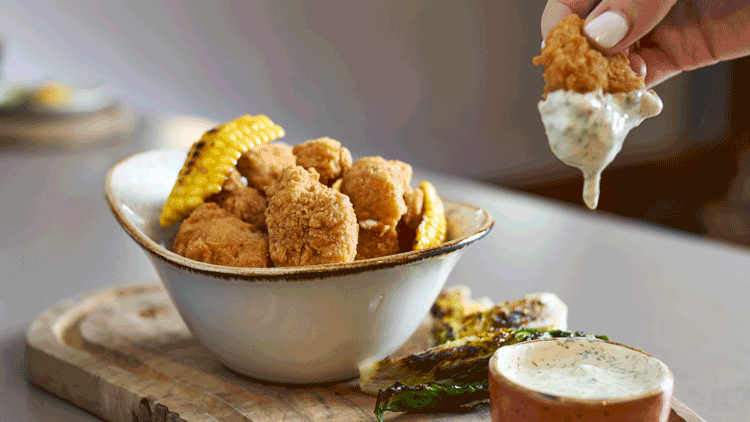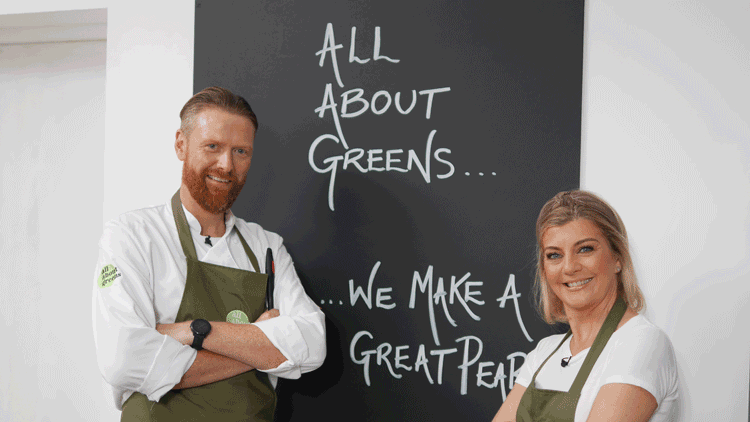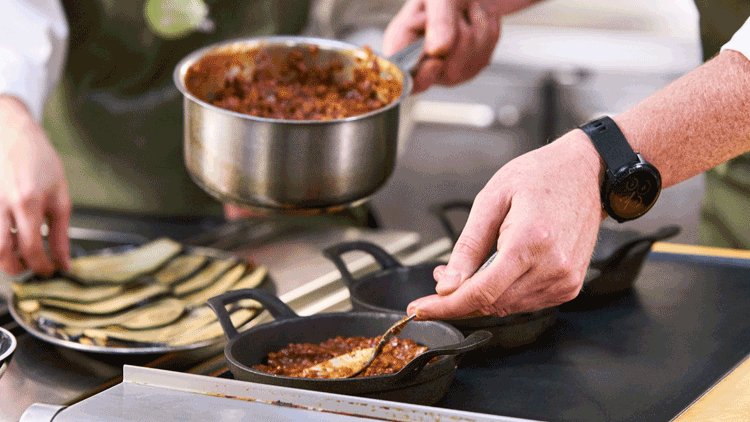Promotional feature
It's time to harness plant-based power

It’s fair to say that the plant-based revolution is well and truly upon us, with the number of people looking for meat-free meals - whether all the time or just occasionally - having risen dramatically over the past few years. Even in the time of lockdown people have looked to reduce meat from their diets, switching instead to plant-based alternatives, with more than one in five consumers saying they have cut their meat consumption, according to an Attest survey conducted earlier this year for The Vegan Society.
In fact, meat-free food choices have increasingly become part of a new normal for consumers, meaning there is no better time for restaurant and pub operators to seize the moment and try to take a piece of the plant-based pie.
With just a few simple swaps, operators can create tasty, easy plant-based dishes that will not only attract non meat-eaters to their venues, offering a vital new revenue stream, but which can maximise profits and even menu efficiencies. Not only is going green good for customers, it’s good for restaurants’ profits too,
Hellmann’s and The Vegetarian Butcher are working with plant-based cooking experts Lisa Hinze and Rupert Worden, whose consultancy All About Greens helps businesses make the most of the plant-based food opportunity. And those businesses that aren’t are missing a simple trick, they say.
“The world is changing, don’t be left behind,” says Worden.
“There’s some very successful food brands out there are doing a fabulous job helping the foodservice industry produce some amazing plant-based products, but also some of the high street restaurant brands are absolutely nailing it - so pubs and restaurants are going to get left behind very quickly, as are some of the larger chains”
Simple switches
According to the duo, it is easier than people think to ‘veganise’ an existing pub or restaurant menu, provided they adhere to certain rules.
“One of the big things is to create classic dishes that meat eaters recognise,” says Hinze, who points to products such as The Vegetarian Butchers’ NoChicken Chunks as playing a vital role in this.
“Don’t attempt to use too many unusual or less well-known ingredients, people have to start the journey with familiarity, which is why products such as NoChicken Chunks really work,” she advises.
“If chefs can make a dish without animal products, they’re onto a winner.”
Switching meat products for plant-based alternatives that have a similar taste and texture in classic dishes is a simple way of appealing to a much wider group of customers, something that has never been so important to do in these challenging times.
“There are obvious switch it out jobs,” says Worden. “If you look at a pub menu, there’s always a pie, fish and chips, a burger, a couple of steaks, curry - three or four of those dishes are really easy to veganise.
“You can put whatever you want in a pie as long as you get these sensory hits. It’s all about wording and how you sell it.”
Another very simple change is to swap non-vegan condiments, such as mayonnaise, for vegan equivalents. Hellmann’s Vegan Mayonnaise, for example, has the same creamy taste, texture and mouthfeel of Hellmann’s Real Mayonnaise but just without the eggs, with consumers often unable to tell the difference between the two.
The culinary team at Unilever Food Solutions suggest using language on menus that describe the textures you would get from non-vegan dishes, keeping them consistent so that plant-based dishes don’t stand out as overtly contrasting in style. For example, if you reference the origin of your meat or fish for quality, mention the brand of your plant-based products too, it says, as they can be seen as a mark of quality.
Alex Hall, executive chef at Unilever Food Solutions, also advises against using the word ‘vegan’ on menus completely, instead opting for the less extreme term ‘plant-based’, which has more appeal among meat eaters looking to reduce their meat and dairy consumption rather than avoid them all entirely.
By taking a closer look at their dishes, Worden believes pubs and restaurants can easily make changes that will give them much wider appeal
“From a chef’s perspective, when I go into a kitchen and help a chef re-engineer their menu, I’m encouraging them to break it down and look at where they use dairy products and switch things out,” he says.
“They take the menu down to protein, carbohydrates, vegetables, sauces, garnishes and look at each element and say what has to be animal based and what doesn’t need to be. How can we create as good a flavour and texture without using animal products?”
Better for business
Appealing to a wider audience, therefore, doesn’t have to be as difficult as people think. Moreover, it makes much better business sense to look at dishes from both a meat-based and plant-based perspective, says Worden.
“For a chef, you’re going to open up your market, reduce your cost base, increase GP, extend the shelf life on a lot of prep and increase your prep effectiveness. You can use things on different dishes if you look at your menu in a modular format and cover off so many more dietary requirements.
“Rather than seeing plant-based dishes as a hassle, champion them. You don’t need to take steak off the menu but put the same passion into creating dishes with no animal products and be proud of them.”
A flexible approach
This is where taking a flexible approach to your menu can really pay dividends, says Hinze, who suggests that if a venue has a meat pie on the menu its other constituents, such as the sauce and the pastry, could still be vegan-friendly, making offering both meat-based and plant-based dishes a doddle.
“If you have a chicken pie on the menu, that bechamel sauce could be made with plant-based sauce. Then you can add your chicken or NoChicken Chunks and you’re not having to create too much extra work. You can add meat, but if the core dish is plant based it is much easier.
The pair have worked with Unilever Food Solutions to create a number of recipes for dishes using The Vegetarian Butcher products and Hellmann’s Vegan Mayonnaise: dishes that are not only simple to prepare, but will have mass appeal. These include bolognese arancini that uses The Vegetarian Butcher NoMince (pictured above); buttermilk fried NoChicken; and a smokey NoHotdog currywurst (also pictured).
While being plant-based, dishes such as these still tick all the boxes in terms of indulgence. “This is why vegan junk food has taken off,” says Worden. “When people go out to eat, they want a treat, something special that gives them satisfaction. You can give them those same experiences and make it delicious and indulgent. Vegan food doesn’t have to be healthy with just nuts and grains and seeds.”
Using Hellmann’s Vegan Mayonnaise as a base allows chefs to create rich, indulgent vegan sauces. A spoonful of Hellmann’s Vegan Mayonnaise will thicken up any warm sauce or cold dressing adding the desired creaminess and mouthfeel. It can also be used to make dips and sides that just a few years ago wouldn’t be possible. A recipe for mushroom calamari developed by All About Greens, for example, comes served with a punchy lime and coriander dip made with Hellmann’s Vegan Mayonnaise, while the buttermilk fried chicken comes with a creamy ranch sauce also made with the mayonnaise.
For restaurants and pubs that don’t believe there is enough demand for plant-based dishes - or who maybe have put one or two on the menu and been disappointed with sales, the duo advise against taking a half-measure approach.
“When people talk about it being commercially viable it’s a bit of a chicken and egg situation,” says Hinze.
“It is quite off-putting to look at a menu and see only one vegan option. The restaurant might think they don’t get may vegans in, but they’re not going to if there is only one choice on the menu.
“You need to embrace it, which is why a flexible menu is best. Soups, salads, sides, pies can all be veganised very easily - and then you’re minimising waste too.”




















